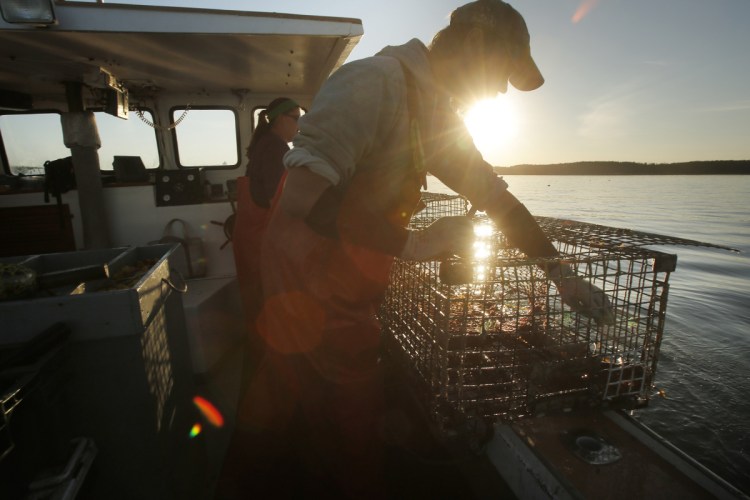You’ll find Maine lobsters served on plates from Paris to Beijing – wherever people want to celebrate with something special. And Maine lobstermen have built a reputation for harvesting one of the world’s most desired seafood items in a way that doesn’t wipe out the species.
That’s been possible because of conservation practices developed through close observation of the species, largely by lobstermen themselves, and passed down from one generation to the next.
But there are still things that are unknown about Maine’s most valuable resource, like:
– Where will baby lobsters settle as the ocean gets warmer?
– What conditions are required for lobster shells to harden, and can they be replicated in onshore tanks?
– Are there better ways to hold, ship and process lobsters that will make them reliably available to more markets?
The need to answer questions like that is what’s behind an exciting collaboration between one of the state’s leading lobster dealers and the state. In a game-changing investment announced last week, Ready Seafood Co. is expanding its live and processed lobster business with a new 40-acre campus in Saco.
RESEARCH
In addition to their investment, they are receiving $2.4 million in research and development funds to build facilities where university and industry scientists can work alongside Ready’s in-house marine biologist to study and better understand lobsters. What they learn will be shared throughout the industry, helping the company as well as their competitors find ways to add value to a product that supports so many Maine jobs and communities.
Like the Millinocket cross-laminated timber plant, which has also received voter-approved bond funds through the Maine Technology Institute, this represents the kind of economic development activity in which Maine’s government belongs.
Unlike across-the-board tax cuts, which reward businesses whether they create any jobs or not, these targeted, competitive grants make sure the public money goes where it’s going to do the most good. And if these private companies can add value to traditional resources like fiber and lobster, the whole Maine economy will be a winner.
In six of the last seven years, the lobster fishery has set records in terms of weight and revenue generated, making it look like it’s not an industry that needs to change. But there are signs that there could be trouble ahead.
A recent study by the Gulf of Maine Research Institute used computer modeling to project a 40 to 60 percent decline in the lobster catch over the next 30 years. State regulators don’t think the drop will be that steep, but they acknowledge that some decline from the record years is probably inevitable.
John Ready, who founded the company with his brother Brendan, doesn’t believe that a smaller catch has to be bad news. If the industry can learn how to be more efficient in the way it handles what is caught and more effective at marketing its products, it will be able to add value all the way down the line of production, and pay lobstermen more even if they are catching less.
VALUE-ADDED CHAIN
Maine fishermen sent more than $200 million of lobster to Canada last year for processing – nearly half of the total catch – losing out on jobs and higher prices that come from adding value here and selling a finished product.
Ready’s plans include a major expansion of their processing facility which will use hyperbaric pressure, instead of heat or chemicals, to kill bacteria before shipping. That could help Maine lobster to reach more distant markets with a better quality product than Canadian competitors.
In the live market, shell hardness determines how far a lobster can be shipped, and most of the lobsters caught in Maine are soft-shell “shedders.”
If distributors could learn how to harden the shell of a lobster while it’s in their tanks, Ready said, he could sell them for more per pound.
He also wants to know what the scientists can tell him about the stresses that cause some live lobsters to die in shipping. He currently can guarantee no more than 2 percent will be lost. “But what if we could cut that to 1 percent?” he asked. Across the fishery, that would be like catching thousands more lobsters every year.
The global economy is changing in ways that create opportunities for Maine, if we are ready to take them. Investing in research and development can position the state to make sure that traditional industries have a future.
Copy the Story LinkSend questions/comments to the editors.



Success. Please wait for the page to reload. If the page does not reload within 5 seconds, please refresh the page.
Enter your email and password to access comments.
Hi, to comment on stories you must . This profile is in addition to your subscription and website login.
Already have a commenting profile? .
Invalid username/password.
Please check your email to confirm and complete your registration.
Only subscribers are eligible to post comments. Please subscribe or login first for digital access. Here’s why.
Use the form below to reset your password. When you've submitted your account email, we will send an email with a reset code.